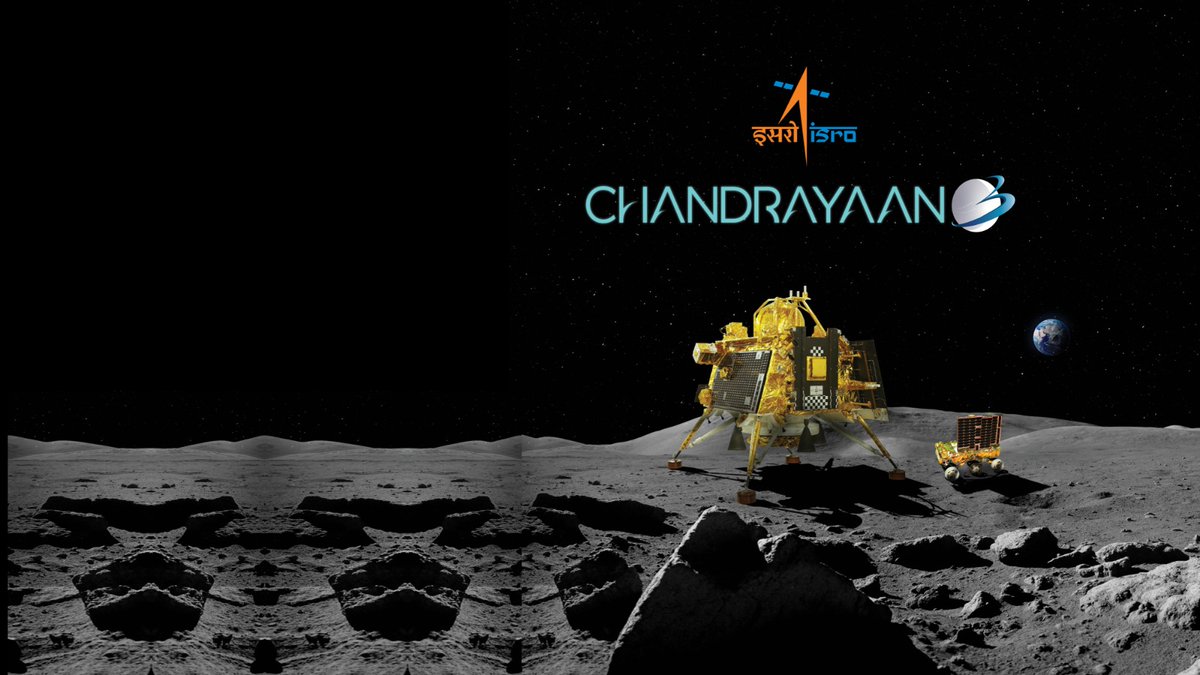India's Chandrayaan-3 moon rover Pragyan rolls onto the lunar surface for 1st time
The Pragyan rover will spend two weeks roaming around the lunar south pole.

India has nailed another milestone in its smashing Chandrayaan-3 moon mission. Less than a day after the historic touchdown, its Pragyan rover rolled out of the lander and onto the lunar surface.
The Indian Space Research Organization (ISRO) announced the successful deployment of Pragyan, a sanskrit word for wisdom, in a post on X, formerly known as Twitter.
"The Ch-3 Rover ramped down from the Lander and India took a walk on the moon!" ISRO said in the post at about 11:00 pm EDT, Wednesday, Aug. 23 (0300 GMT on Thursday, Aug. 24).
In a subsequent post, the organization confirmed that "all activities are on schedule" and "all systems are normal."
The solar-powered Pragyan descended onto the moon's surface on Wednesday aboard the Chandrayaan-3's Vikram (sanskrit for valor) lander in what was India's first successful moon landing and the world's first landing near the lunar south pole.
Related: Missions to the moon: Past, present and future
Pragyan will now spend two weeks exploring the vicinity of the landing site, studying the chemical composition of moon dust and gravel. The moon's south pole has become a focus of attention for the global moon science and exploration community in recent years because this region is believed to hold substantial quantities of water ice in the rocks of its permanently shadowed polar craters. Scientists think this water could be extracted and used by future human crews, which would bring down the cost of moon exploration as water wouldn't have to be brought from Earth. This water could also be split into hydrogen and oxygen and used to make fuel for rockets that might be launching from the moon in the future.
Get the Space.com Newsletter
Breaking space news, the latest updates on rocket launches, skywatching events and more!
Astronomers are also eyeing those shaded and thermally stable craters as a possible location for next-generation telescopes that would allow them to peer deeper into the universe than is currently possible.
The solar-powered Pragyan and its companion Vikram are not expected to last beyond the next lunar night, a frigid two-week period without sunshine.
Chandrayaan-3 touched down on the lunar surface on Wednesday at 8:33 am ET (1233 GMT or 6:03 p.m. India Standard Time). About four hours later, ISRO shared a set of four images captured by the lander's cameras during descent and one image taken after touchdown, revealing a pockmarked lunar surface and the lander's own shadow.
Chandrayaan-3 was India's second try at landing near the moon's south pole. The mission's predecessor, Chandrayaan-2, crashed into the moon in September 2019 due to a software glitch. India celebrated the triumphant landing only three days after Russia failed to land its Luna-25 mission in the same area following a botched orbital maneuver. Russia's first try to land on the moon in 47 years, Luna-25 was the former space super power's attempt to restore respect for its struggling space sector amid the war in Ukraine, which has made it an international pariah.
Join our Space Forums to keep talking space on the latest missions, night sky and more! And if you have a news tip, correction or comment, let us know at: community@space.com.

Tereza is a London-based science and technology journalist, aspiring fiction writer and amateur gymnast. Originally from Prague, the Czech Republic, she spent the first seven years of her career working as a reporter, script-writer and presenter for various TV programmes of the Czech Public Service Television. She later took a career break to pursue further education and added a Master's in Science from the International Space University, France, to her Bachelor's in Journalism and Master's in Cultural Anthropology from Prague's Charles University. She worked as a reporter at the Engineering and Technology magazine, freelanced for a range of publications including Live Science, Space.com, Professional Engineering, Via Satellite and Space News and served as a maternity cover science editor at the European Space Agency.









